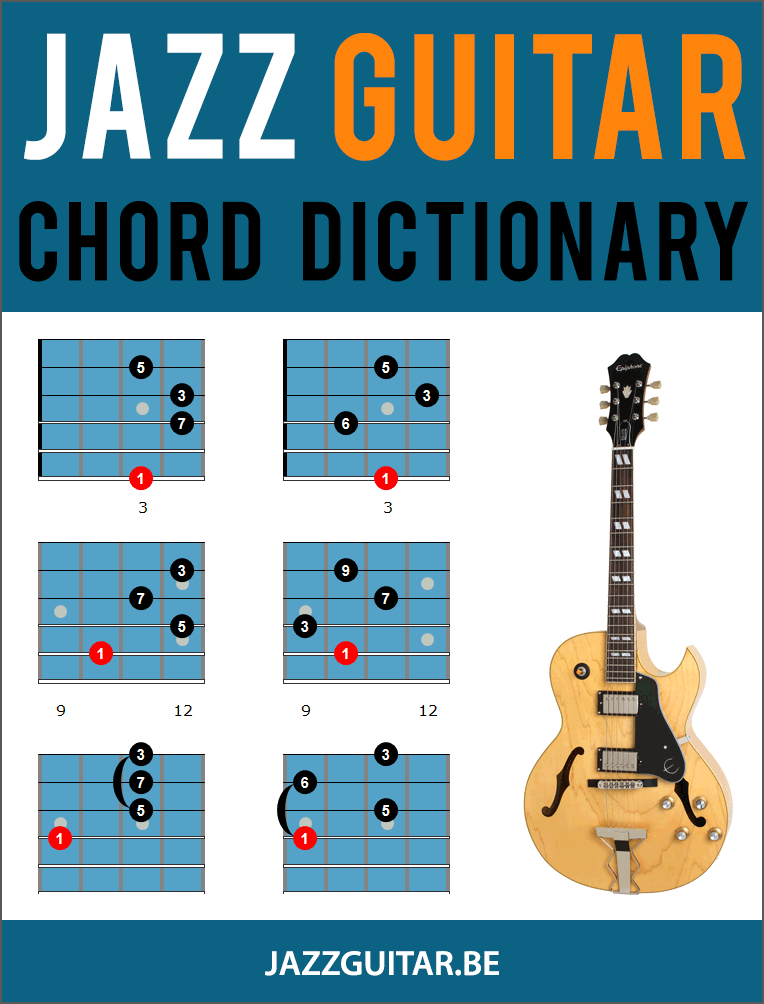On Green Dolphin Street Jazz Guitar Chord Study
One of the most commonly learned and played jazz standards is On Green Dolphin Street. In a similar fashion to Autumn Leaves, this tune is often played in two different keys, C and Eb. In this lesson, you’ll learn a chord study played over On Green Dolphin Street in the key of C major. If you want to take this etude further, you can try applying the concepts and chord shapes in this lesson to the key of Eb as well.
So, grab your guitar and let’s take a look at a fun and cool-sounding chord study for On Green Dolphin Street.
THE JAZZ GUITAR CHORD DICTIONARY (FREE eBOOK)
Download now and learn 244 chord shapes!
What’s In This Jazz Guitar Chord Study
To help you understand the various harmonic concepts and chord shapes used in this study, here is a brief outline of each of these items to explore from a theoretical perspective before applying them to the fretboard with the study.
If you dig one or more of these concepts, feel free to take them out of this study and apply them to other tunes you know or are working on in the woodshed in order to expand on them further in your playing.
Drop 2 & 4 – These chords are built with the root position 1-5-3-7 shape, with the other three inversions worked out from there. There is always a string skip between the 2 nd and 3 rd notes of these chord shapes.
6 th Chords – You can alter any maj7 chord by lowering the 7 th by 2 frets, a whole tone, in order to create the softer sounding 6 th chord.
Drop 2 – Drop 2 chords are built with the root position 1-5-7-3 shape, with the inversions built up from there.
3 and 7 – Built in a pianistic style, these chords use the 3 rd and 7 th as the lowest two notes of the chord, with one or more color notes added on top of those lower, foundational notes.
Joe Pass Slide Riff – This chord riff is built by sliding from the chord you are on, say Cmaj7, down a fret to Bmaj7 and back to the original chord. Joe Pass used this often in his playing, and it is a fun and easy way to spice up your chord-soloing or comping phrases.
4 th – 4 th chords are built by stacking 2 or more 4 th intervals on top of each other, as compared to the traditional 3 rd intervals that you find in drop 2 and other chord shapes.
Lyd Sub – This chord sub is built by playing a maj7#11 chord one tone below the root of any 7 th chord you are on. So, if you have G7, you can play Fmaj7#11 in order to outline the 13 th shape of the G7 chord.
Dim Sub – When playing 7b9 chords, you can play a dim7 chord from the b9, 3, 5, or b7 of that chord to build a rootless 7b9 shape.
Triad – These chords are built by playing triads, usually the 3-5-7 of the underlying chord shape.
Shell – You can take out one note from any four-note chord shape, such as removing the 5 th from a 1-3-5-7 chord, in order to produce a “shell” shape of that chord.
Triad 2 5 – This triad progression is built by playing the 3-5-7 of the iim7 chord, then lowering the 7 by a fret to produce the intervals 7-9-3 over the V7 chord in that progression.
On Green Dolphin Street Jazz Guitar Comping Etude
Now that you have an understanding of what chords and harmonic ideas are being used in this study, which you can see labeled in the study below, let’s get these chords under your fingers and into your ears.
Start by learning each 8-bar section of the study in order to break it down into digestible chunks, before bringing these sections together and working the study as a whole.
As well, since there is a good amount of syncopation in this study, it’s a good idea to work with a metronome at a slow tempo at first, before increasing the tempo and working things up from there.
Источник
